Ancient Technology..,
Its a Look-a-like of the tesla tower..,
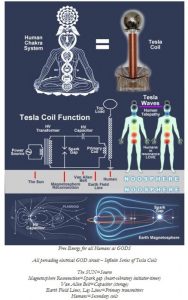
Ancient Aero-technology “The Vimana”

Ancient Technology..,
Its a Look-a-like of the tesla tower..,

Ancient Aero-technology “The Vimana”

For many people, FREE ENERGY is a “buzz word” that has no clear meaning. As such, it relates to a host of inventions that do something that is not understood, and is therefore a mystery. For others, it means “perpetual motion” and is therefore dismissed, without due consideration. This website is dedicated to clarifying exactly what free energy is, how it works and how it can be applied in your everyday life….for light, heat and power.
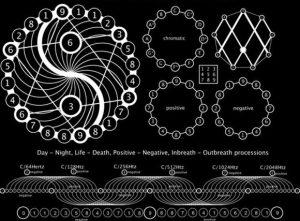
In the simplest sense, FREE ENERGY is any energy that is provided by the Natural World. This may include energy sources that you are familiar with, such as solar panels or wind generators, but also could include amazing technologies like a car powered by water-fuel, a battery charger powered by Magnets, or a home heating system powered by the Earth. The best FREE ENERGY systems deliver energy at no on-going cost to the user, without detrimental effects to the environment, and at extremely low costs for the maintenance and operation of the equipment.
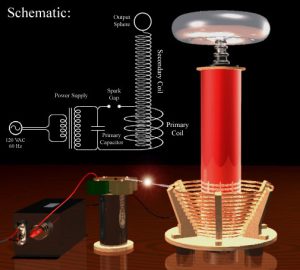
On this website, we will NOT be presenting any futuristic technologies, or impossible inventions that break the Laws of Physics. What I will be talking about are technologies that tap into Natural Sources of energy in the environment and convert them into useful forms of energy for heat, light, and motive power. In fact, the lecture on Open System Thermodynamics (in the column to the right) is a great place to begin to understand this science.
A good example of this is a way to heat your home from the Earth. In moderate climates, the Earth below the frost line is a reservoir of constant temperature. This temperature is about 55º F (13º C). In the winter, this reservoir of heat can be accessed and concentrated by a geothermal heat pump system, and used to heat your house for about 1/3rd the cost of running an electric furnace. In addition to this, if the house is insulated to a rating of R-60, the cost of heating the house can be further reduced by another 60%. With just these two simple technologies, both available today, the cost of heating your home in the winter can be reduced by 87%. 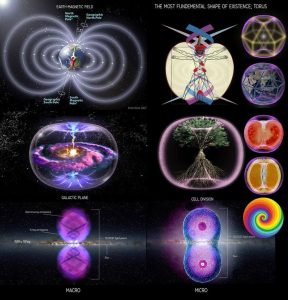 That is just 13% of the cost of heating the same house with an electric furnace where the house is insulated to a rating of R-19. In the summer, the air-conditioning costs are similarly low, using the same heat pump in reverse.
That is just 13% of the cost of heating the same house with an electric furnace where the house is insulated to a rating of R-19. In the summer, the air-conditioning costs are similarly low, using the same heat pump in reverse.
87% energy benefit, year after year, at no more cost to you. That is the FREE ENERGY you can have right now! Your lifestyle is the same, but your energy costs are much lower. By conserving heat with the better insulation, and by using Natural Energy first, including the heat already present in the Earth, it is possible to dramatically lower your energy demands for home heating and your “carbon footprint”. This is just one example. There are dozens of other ways to save energy..
So, FREE ENERGY is also any energy we can use at NO COST. If we learn to “Conserve, and use Natural Energy First”, then, the small amount of energy that is still required for our needs is more easily produced by renewable energy sources such as wind, solar, hydro, and bio-fuels. Even if we are still using carbon based fuels to supply the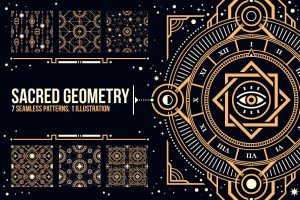 remainder, our energy costs have dropped considerably and our carbon footprint is greatly reduced.
remainder, our energy costs have dropped considerably and our carbon footprint is greatly reduced.
We discuss a wide array of technologies from the PAST that have still not been integrated into the Market Economy or made available for everyday use. We also talk about technologies in the PRESENT that are available right now that can dramatically lower our energy costs. And finally, We talk about technologies that may become available in the FUTURE that could radically change our world for the better.
We discuss our philosophy of energy use and the economics of using FREE ENERGY wherever possible. Quite often, using Natural Energy systems costs a little more at the beginning, but much less over time. We have to start thinking of total costs for using a system, including the energy costs for the life of the product. When the total economics of a system are understood, FREE ENERGY systems are the most cost effective.
We discuss the problems associated with balancing individual freedom with social responsibility. Society cannot provide the individual with rights and freedoms if the individual is unwilling to provide the society with responsible behavior in return. 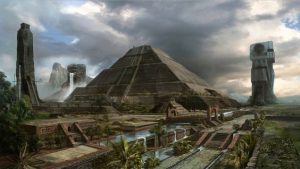 The arrival of unlimited amounts of low-cost, clean energy could be extremely destabilizing to an uncivil society. These developments provide unparalleled opportunities for both economic disruption or rapid innovation.
The arrival of unlimited amounts of low-cost, clean energy could be extremely destabilizing to an uncivil society. These developments provide unparalleled opportunities for both economic disruption or rapid innovation.
We discuss a number of simple technologies, that are already in the public domain, that clearly demonstrate that high mileage cars are simple to build and cost effective right now. The public needs to demand that vehicles like these be made available immediately.
we show over 35 different educational books and filmed lectures on the science and method of advanced energy technologies, presented by the leading experts in this field. Many of these products can also be accessed by their images in the right column of the pages on this website. Currently, we are educating the next generation of scientists and engineers about the real state of technological discovery. In the future, these new energy technologies will make a huge contribution to cleaning up the environment and providing low-cost energy for generations to come.
This world needs a more just distribution of energy to the developing countries, and the ability to provide cleaner energy at a lower cost. In addition to this, we all must learn to be better stewards of the environment. That means pollute less and recycle more. But it also means using our energy resources more efficiently and using more energy that is generated locally, which of course, promotes renewable sources.
The more you know about the different energy options available, the more opportunities you can create in your life to use them. We invite you to explore these exciting opportunities with us.
Welcome to the Decentralized World of FREE ENERGY.
Welcome on this section we list ALL of the Digital Books and filmed Lectures produced to date, by experts in this field, covering the advanced science of efficient energy production and use. These are primarily EDUCATIONAL materials, designed to TEACH you the science behind how these technologies actually work. Think of this as your portal to our On-Line University with Course Materials in the Free Energy Sciences.
 Open System Thermodynamics is the lecture I gave at the 2013 Energy Science and Technology Conference. It is the premier communication explaining WHY Free Energy technologies are REAL and the underlying principles upon which they work. If you are interested in Free Energy technology, begin your education here.
Open System Thermodynamics is the lecture I gave at the 2013 Energy Science and Technology Conference. It is the premier communication explaining WHY Free Energy technologies are REAL and the underlying principles upon which they work. If you are interested in Free Energy technology, begin your education here.
 Tesla’s Radiant Energy was the Keynote Address and Lecture I delivered at the 2006 Extraordinary Technology Conference. It is considered the definitive explanation of Tesla’s model of electricity, following his discovery in 1893 of the “method of conversion” of ordinary electricity into a new, and extraordinary form.
Tesla’s Radiant Energy was the Keynote Address and Lecture I delivered at the 2006 Extraordinary Technology Conference. It is considered the definitive explanation of Tesla’s model of electricity, following his discovery in 1893 of the “method of conversion” of ordinary electricity into a new, and extraordinary form.
 Bedini SG: The Complete Beginner’s Handbook is the first book in the 3-part Series on John Bedini’s amazing Free Energy machine. The Beginner’s Handbook starts you at the beginning, with complete instructions to build your own model, along with circuit theory, battery charging tutorial, parts list, and more. This is a GREAT Science Fair project for tomorrow’s scientists!!!
Bedini SG: The Complete Beginner’s Handbook is the first book in the 3-part Series on John Bedini’s amazing Free Energy machine. The Beginner’s Handbook starts you at the beginning, with complete instructions to build your own model, along with circuit theory, battery charging tutorial, parts list, and more. This is a GREAT Science Fair project for tomorrow’s scientists!!!
 Bedini SG: The Complete Intermediate Handbook is the second book in the 3-part Series on John Bedini’s amazing Free Energy machine. It picks up where the Beginner’s Handbook leaves off, covering fine tuning the circuits, advanced theory, capacitor discharge methods, and more. It’s the next step for serious students of this science.
Bedini SG: The Complete Intermediate Handbook is the second book in the 3-part Series on John Bedini’s amazing Free Energy machine. It picks up where the Beginner’s Handbook leaves off, covering fine tuning the circuits, advanced theory, capacitor discharge methods, and more. It’s the next step for serious students of this science.
 Bedini SG: The Complete Advanced Handbook is the third book in the 3-part Series on John Bedini’s amazing Free Energy machine. It covers the deep history of the development of this technology, including complete specifications for the “Watson machine” and John’s “low-drag” generators. This package includes the book and a 1-hour lecture and demonstration from the 2014 Conference.
Bedini SG: The Complete Advanced Handbook is the third book in the 3-part Series on John Bedini’s amazing Free Energy machine. It covers the deep history of the development of this technology, including complete specifications for the “Watson machine” and John’s “low-drag” generators. This package includes the book and a 1-hour lecture and demonstration from the 2014 Conference.
 Bedini SG: Beyond the Advanced Handbook is the Live Demonstration and lecture I gave at the 2016 Energy Science and Technology Conference. It features a demonstration of a Kromrey Generator operating at a COP>2.5 and the 12 coil machine I built that has motor, generator and an energy recycling 3-battery power supply with an automatic battery rotator system.
Bedini SG: Beyond the Advanced Handbook is the Live Demonstration and lecture I gave at the 2016 Energy Science and Technology Conference. It features a demonstration of a Kromrey Generator operating at a COP>2.5 and the 12 coil machine I built that has motor, generator and an energy recycling 3-battery power supply with an automatic battery rotator system.
 Battery Secrets is the Lecture I gave at the 2011 Bedini Technology Conference. It covers most of what John Bedini and I learned about lead-acid batteries while developing his first generation battery chargers in 2004-5. If you want to understand how batteries actually work, this is the place to start!
Battery Secrets is the Lecture I gave at the 2011 Bedini Technology Conference. It covers most of what John Bedini and I learned about lead-acid batteries while developing his first generation battery chargers in 2004-5. If you want to understand how batteries actually work, this is the place to start!
 Perpetual Motion Reality is the Lecture I gave at the 2012 Energy Science and Technology Conference. It traces the history of our ancestor’s quest to harness energy from Nature. The Natural World is in perpetual motion and there is energy all around us, all the time. Find out how the “perpetual motion deniers” have hi-jacked our clean energy future!
Perpetual Motion Reality is the Lecture I gave at the 2012 Energy Science and Technology Conference. It traces the history of our ancestor’s quest to harness energy from Nature. The Natural World is in perpetual motion and there is energy all around us, all the time. Find out how the “perpetual motion deniers” have hi-jacked our clean energy future!
 Home Energy Savings Guide shows you the REAL WAY to cut your home utility bills in half! This manual walks you through the process of eliminating all the major ways your home currently WASTES energy. Solutions are inexpensive and effective and do NOT involve installing solar panels or wind generators.
Home Energy Savings Guide shows you the REAL WAY to cut your home utility bills in half! This manual walks you through the process of eliminating all the major ways your home currently WASTES energy. Solutions are inexpensive and effective and do NOT involve installing solar panels or wind generators.
 Ignition Secrets, Part 2 is the Lecture Aaron presented at the 2015 Energy Science and Technology Conference. It focuses on the practical application of his Patented Plasma Ignition method to modern, computer-controlled automobile engines. Package includes a PDF file of the Power Point images from the Lecture.
Ignition Secrets, Part 2 is the Lecture Aaron presented at the 2015 Energy Science and Technology Conference. It focuses on the practical application of his Patented Plasma Ignition method to modern, computer-controlled automobile engines. Package includes a PDF file of the Power Point images from the Lecture.
 A Course in Mind Power is a spectacular companion piece to the Lessons in Advanced Perception. It delves deep into the origins of the relationship between muscle tension and subtle perception and a number of other critical methods. Be the one in the room who knows more about what others think and feel.
A Course in Mind Power is a spectacular companion piece to the Lessons in Advanced Perception. It delves deep into the origins of the relationship between muscle tension and subtle perception and a number of other critical methods. Be the one in the room who knows more about what others think and feel.
 The Real History of Ed Gray is a two lecture set. The first part is Mark McKay’s presentation to the 2012 Energy Science and Technology Conference summarizing his 5,000 hours of research into the Ed Gray saga. The second part is Mark’s presentation to the 2014 Conference with updates and additions to his research. If you want to know what REALLY happened to Ed Gray and his technology, this material is a must!
The Real History of Ed Gray is a two lecture set. The first part is Mark McKay’s presentation to the 2012 Energy Science and Technology Conference summarizing his 5,000 hours of research into the Ed Gray saga. The second part is Mark’s presentation to the 2014 Conference with updates and additions to his research. If you want to know what REALLY happened to Ed Gray and his technology, this material is a must!
 Over-unity Disclosure is Graham Gunderson’s presentation to the 2015 Energy Science and Technology conference. In this Lecture, he explains the history and development of the math and engineering principles needed to design working, solid-state transformer power supplies with a COP>1. Graham brings half his lab equipment and sets it up on stage, and shows everyone how to design and measure this kind of project. Technical, but awesome!!
Over-unity Disclosure is Graham Gunderson’s presentation to the 2015 Energy Science and Technology conference. In this Lecture, he explains the history and development of the math and engineering principles needed to design working, solid-state transformer power supplies with a COP>1. Graham brings half his lab equipment and sets it up on stage, and shows everyone how to design and measure this kind of project. Technical, but awesome!!
 Floyd Sweet’s “Vacuum Triode Amplifier.” This is Graham Gunderson’s second presentation to the 2015 Energy Conference. Here, he discusses his extensive research into Floyd Sweet’s “Vacuum Triode Amplifier” or VTA device. This presentation covers the remarkable characteristics of Barium Ferrite material, which was the “beating heart” of the Sweet VTA.
Floyd Sweet’s “Vacuum Triode Amplifier.” This is Graham Gunderson’s second presentation to the 2015 Energy Conference. Here, he discusses his extensive research into Floyd Sweet’s “Vacuum Triode Amplifier” or VTA device. This presentation covers the remarkable characteristics of Barium Ferrite material, which was the “beating heart” of the Sweet VTA.
 ECE Theory of Physics This is Dr. Douglas Lindstrom’s presentation to the 2015 Energy Science and Technology Conference. In this Lecture, Dr. Lindstrom discusses the history of the development of the current Physics Model, and the new ECE Theory of Physics. If you want to see how close “main stream science” is getting to “alternative science,” you may just want to look into this.
ECE Theory of Physics This is Dr. Douglas Lindstrom’s presentation to the 2015 Energy Science and Technology Conference. In this Lecture, Dr. Lindstrom discusses the history of the development of the current Physics Model, and the new ECE Theory of Physics. If you want to see how close “main stream science” is getting to “alternative science,” you may just want to look into this.
 Magnetic Energy Secrets is the Lecture and demonstration that Paul presented at the 2012 Energy Science and Technology Conference. If you are an engineer, DON’T watch this film, as Paul shows conclusively how to convert magnetism into useful, increased energy in an electrical circuit. Mentally contagious, NO CURE KNOWN!
Magnetic Energy Secrets is the Lecture and demonstration that Paul presented at the 2012 Energy Science and Technology Conference. If you are an engineer, DON’T watch this film, as Paul shows conclusively how to convert magnetism into useful, increased energy in an electrical circuit. Mentally contagious, NO CURE KNOWN!
 Magnetic Energy Secrets, Part 3 is the Lecture Paul presented at the 2015 Energy Science and Technology Conference. Following up on all his previous work, Paul lays out the clearest, and simplest parameters for designing and building a self-running electro-mechanical machine. If you can’t understand this, you definitely need to change your hobby!
Magnetic Energy Secrets, Part 3 is the Lecture Paul presented at the 2015 Energy Science and Technology Conference. Following up on all his previous work, Paul lays out the clearest, and simplest parameters for designing and building a self-running electro-mechanical machine. If you can’t understand this, you definitely need to change your hobby!
 The Babcock DC Motor is the Lecture and Demonstration Paul presented at the 2016 Energy Science and Technology Conference. This time, Paul discusses his patented, no-back EMF “External Magnetic Field” electric motor for the first time, in public! Includes a complete demonstration and explanation of the motor’s theory and method to produce COP>1 performance.
The Babcock DC Motor is the Lecture and Demonstration Paul presented at the 2016 Energy Science and Technology Conference. This time, Paul discusses his patented, no-back EMF “External Magnetic Field” electric motor for the first time, in public! Includes a complete demonstration and explanation of the motor’s theory and method to produce COP>1 performance.
 Tesla’s Hidden Discoveries is the Lecture presented by Jim to the 2013 Energy Science and Technology Conference. It traces his life-long research into phases of Nikola Tesla’s work that most other researchers have neglected, including his discovery of both electrical and mechanical power magnification. Brilliant work!
Tesla’s Hidden Discoveries is the Lecture presented by Jim to the 2013 Energy Science and Technology Conference. It traces his life-long research into phases of Nikola Tesla’s work that most other researchers have neglected, including his discovery of both electrical and mechanical power magnification. Brilliant work!
 Dynaflux Alternator is a three part package that includes a filmed demonstration for a group of investors, the complete Tour of Jim’s Lab of working prototypes, and a PDF file of all of Jim’s Patents and Patent applications. See for yourself why Jim’s contribution to Free Energy Research is legendary!
Dynaflux Alternator is a three part package that includes a filmed demonstration for a group of investors, the complete Tour of Jim’s Lab of working prototypes, and a PDF file of all of Jim’s Patents and Patent applications. See for yourself why Jim’s contribution to Free Energy Research is legendary!
 Tesla’s Power Magnification is the Lecture that Jim and Paul Babcock presented to the 2014 Energy Science and Technology Conference. It is the in-depth revelation of how Tesla learned how to magnify electric power in an AC system by oscillating waves of energy between the load and the generator. This is the biggest breakthrough in Free Energy Research EVER ANNOUNCED to the public.
Tesla’s Power Magnification is the Lecture that Jim and Paul Babcock presented to the 2014 Energy Science and Technology Conference. It is the in-depth revelation of how Tesla learned how to magnify electric power in an AC system by oscillating waves of energy between the load and the generator. This is the biggest breakthrough in Free Energy Research EVER ANNOUNCED to the public.
 The Dynaflux Concept and Lenz’s Lawis the Lecture that Jim presented to the 2015 Energy Science and Technology Conference. It expands on the information previously released in the Dynaflux Alternator package, and goes on to reveal information even left out of the patents! A MUST addition for serious students of Jim’s work.
The Dynaflux Concept and Lenz’s Lawis the Lecture that Jim presented to the 2015 Energy Science and Technology Conference. It expands on the information previously released in the Dynaflux Alternator package, and goes on to reveal information even left out of the patents! A MUST addition for serious students of Jim’s work.
 Fundamentals of the Transforming Generator is the Lecture that Jim presented to the 2016 Energy Science and Technology Conference. It expands on the information previously released in the Lab Tour material, and goes deep into the experimental proofs showing that “load currents” do NOT have to slow a generator down!! Another MUST addition for the libraries of serious electrical engineers and students of Jim’s work.
Fundamentals of the Transforming Generator is the Lecture that Jim presented to the 2016 Energy Science and Technology Conference. It expands on the information previously released in the Lab Tour material, and goes deep into the experimental proofs showing that “load currents” do NOT have to slow a generator down!! Another MUST addition for the libraries of serious electrical engineers and students of Jim’s work.
 Wireless Giant of the Pacific is Eric’s 382 page book covering the history of the RCA “wireless” facility at Bolinas, California. Before the invention of the word “radio,” these massive “wireless” stations were sending and receiving communications between Honolulu, Hawaii and New Jersey using “instantaneous electrostatic” propagation methods.
Wireless Giant of the Pacific is Eric’s 382 page book covering the history of the RCA “wireless” facility at Bolinas, California. Before the invention of the word “radio,” these massive “wireless” stations were sending and receiving communications between Honolulu, Hawaii and New Jersey using “instantaneous electrostatic” propagation methods.
 Electrical Transmission in Multiple Coordinate Systems is the 4-hour Lecture Eric gave at the 2016 Energy Science and Technology Conference. This lecture and Power Point presentation further expands on his work covering the “faster than Light” propagation methods discussed in Extraluminal Transmission Systems, as well as his work on the mathematics of multi-phase transmission of electricity in Versor Algebra, Part 2. As usual, brilliant technical material!
Electrical Transmission in Multiple Coordinate Systems is the 4-hour Lecture Eric gave at the 2016 Energy Science and Technology Conference. This lecture and Power Point presentation further expands on his work covering the “faster than Light” propagation methods discussed in Extraluminal Transmission Systems, as well as his work on the mathematics of multi-phase transmission of electricity in Versor Algebra, Part 2. As usual, brilliant technical material!
 Telluric Research is the 4-hour, complete tour of Eric’s monumental “Earth Listening Station” erected in the high desert of Landers, California. The tour begins at the laboratory receiving station, were all of the signals converge on the vast array of recording equipment and direct listening systems. Then, it is out into the 10 acre “antenna farm” to see the exact method whereby these signals are collected from the natural world. This is the ACTUAL way “extraluminal” propagations are detected! Phenomenal!!!
Telluric Research is the 4-hour, complete tour of Eric’s monumental “Earth Listening Station” erected in the high desert of Landers, California. The tour begins at the laboratory receiving station, were all of the signals converge on the vast array of recording equipment and direct listening systems. Then, it is out into the 10 acre “antenna farm” to see the exact method whereby these signals are collected from the natural world. This is the ACTUAL way “extraluminal” propagations are detected! Phenomenal!!!
 Four Quadrant Representation of Electricity is the Lecture Eric gave at the 2013 Energy Science and Technology Conference. It covers the history and development of using Versor Algebra to describe all of the functions of AC electricity, as first used by McFarlane and Steinmetz. Package includes both a book version and the Conference Lecture.
Four Quadrant Representation of Electricity is the Lecture Eric gave at the 2013 Energy Science and Technology Conference. It covers the history and development of using Versor Algebra to describe all of the functions of AC electricity, as first used by McFarlane and Steinmetz. Package includes both a book version and the Conference Lecture.
 Versor Algebra, Part 1 is Eric’s book on the pure Mathematics of Versor Algebra as it may be applied to the engineering of various, multi-phase Alternating Current electrical systems. Learn the REAL way to describe AC electricity without Maxwell’s Equations or any calculus! Revolutionary, to say the least!
Versor Algebra, Part 1 is Eric’s book on the pure Mathematics of Versor Algebra as it may be applied to the engineering of various, multi-phase Alternating Current electrical systems. Learn the REAL way to describe AC electricity without Maxwell’s Equations or any calculus! Revolutionary, to say the least!
 Versor Algebra, Part 2 is Eric’s second book on the pure Mathematics of Versor Algebra as it may be applied to specific power engineering situations. Continue learning the REAL way to describe AC electricity without Maxwell’s Equations or any calculus! The foundation for this mathematics is now laid!
Versor Algebra, Part 2 is Eric’s second book on the pure Mathematics of Versor Algebra as it may be applied to specific power engineering situations. Continue learning the REAL way to describe AC electricity without Maxwell’s Equations or any calculus! The foundation for this mathematics is now laid!
 Lone Pine Writings, Part 1 is one of the most important books ever written on the subject of Electrical Engineering. In classic fashion, Eric lays out the REAL definition of terms used to describe all of the various functions that arise in AC electrical systems. Take the “Red Pill” and find out why no one (except Eric) really knows how the electricity GRID works anymore! Absolutely Phenomenal!
Lone Pine Writings, Part 1 is one of the most important books ever written on the subject of Electrical Engineering. In classic fashion, Eric lays out the REAL definition of terms used to describe all of the various functions that arise in AC electrical systems. Take the “Red Pill” and find out why no one (except Eric) really knows how the electricity GRID works anymore! Absolutely Phenomenal!
 Lone Pine Writings, Part 2 is an astonishing collection of essays by Eric, including: The Theory of Anti-Relativity, Metrical Dimensional Relations of the Aether, The Camp David Antenna, Symbolic Operators, and Law of Electro-magnetic Induction. See why many people believe that Eric himself is a Force of Nature!
Lone Pine Writings, Part 2 is an astonishing collection of essays by Eric, including: The Theory of Anti-Relativity, Metrical Dimensional Relations of the Aether, The Camp David Antenna, Symbolic Operators, and Law of Electro-magnetic Induction. See why many people believe that Eric himself is a Force of Nature!
 The Power of the Aether is the 4-hour Lecture and Power Point presentation that Eric gave at the 2015 Energy Science and Technology Conference. It covers a vast history of the vitalistic side of science with regard to the Human Experience of the Natural World. For a more detailed review of this Lecture.
The Power of the Aether is the 4-hour Lecture and Power Point presentation that Eric gave at the 2015 Energy Science and Technology Conference. It covers a vast history of the vitalistic side of science with regard to the Human Experience of the Natural World. For a more detailed review of this Lecture.
 Tesla’s Ideal Flying Machine is William Lyne’s presentation to the 2014 Energy Science and Technology Conference. It traces his experiences with UFOs and his theories that this planet is NOT being visited by Aliens from Outer Space. Author of the book Pentagon Aliens, this is a rare appearance of Bill Lyne speaking in public.
Tesla’s Ideal Flying Machine is William Lyne’s presentation to the 2014 Energy Science and Technology Conference. It traces his experiences with UFOs and his theories that this planet is NOT being visited by Aliens from Outer Space. Author of the book Pentagon Aliens, this is a rare appearance of Bill Lyne speaking in public.
 On the Parallel Propulsion Researches of Tesla and J.J. Thomson is William Lyne’s presentation to the 2015 Energy Science and Technology Conference. Here, Lyne revisits the Theoretical World of the 1880s, where geniuses like Tesla, Thomson, Mendeleev, and others successfully described how electricity had “momentum” and gravity was related to electricity through the Aether. This work laid the scientific foundations for electro-gravitic propulsion systems, which both Tesla and Thomson worked on.
On the Parallel Propulsion Researches of Tesla and J.J. Thomson is William Lyne’s presentation to the 2015 Energy Science and Technology Conference. Here, Lyne revisits the Theoretical World of the 1880s, where geniuses like Tesla, Thomson, Mendeleev, and others successfully described how electricity had “momentum” and gravity was related to electricity through the Aether. This work laid the scientific foundations for electro-gravitic propulsion systems, which both Tesla and Thomson worked on.
 Real Rain Making is the Complete Collection of books and films documenting the life work of Trevor James Constable’s Etheric Weather Engineering methods. Includes digital versions of the books Loom of the Future and Operations Reports, as well as hours of filmed footage of actual rain generating operations with corresponding explanations of the physics involved. This collection of material is the most convincing evidence ever presented to the public that there really IS an Etheric Energy Field available in the Natural Environment!
Real Rain Making is the Complete Collection of books and films documenting the life work of Trevor James Constable’s Etheric Weather Engineering methods. Includes digital versions of the books Loom of the Future and Operations Reports, as well as hours of filmed footage of actual rain generating operations with corresponding explanations of the physics involved. This collection of material is the most convincing evidence ever presented to the public that there really IS an Etheric Energy Field available in the Natural Environment!
 The Lord’s Pump Project is the Lecture Al Throckmorton presented at the 2015 Energy Science and Technology Conference. It outlines the history and development of this NEW use for HHO gas, by producing an explosive RAM PUMP, capable of lifting water hundreds of feet in the air. This package of material also includes a 29 page PDF file of schematics, diagrams, and other supporting material.
The Lord’s Pump Project is the Lecture Al Throckmorton presented at the 2015 Energy Science and Technology Conference. It outlines the history and development of this NEW use for HHO gas, by producing an explosive RAM PUMP, capable of lifting water hundreds of feet in the air. This package of material also includes a 29 page PDF file of schematics, diagrams, and other supporting material.
 On the Art of Natural VLF Field Recording is Stephen P. McGreevy’s presentation to the 2015 Energy Science and Technology Conference. This lecture introduces the audience to the fascinating world of electromagnetic signals emanating from the Earth in the audio frequency band. The package includes recordings of these sounds and schematics of the equipment used to detect them. Great for hobbyists and engineers alike.
On the Art of Natural VLF Field Recording is Stephen P. McGreevy’s presentation to the 2015 Energy Science and Technology Conference. This lecture introduces the audience to the fascinating world of electromagnetic signals emanating from the Earth in the audio frequency band. The package includes recordings of these sounds and schematics of the equipment used to detect them. Great for hobbyists and engineers alike.
| Nikola Tesla |
If you want to find the secrets of the universe, think in terms of energy, frequency and vibration—Nikola Tesla
Everything in life is vibration—Albert Einstein
The natural frequency of an object is associated with one of its many “standing wave patterns” by which it vibrates. The natural frequencies of a musical instrument are sometimes referred to as the harmonics of the instrument. An instrument can be forced into vibrating at one of its harmonics (with one of its standing wave patterns) if another interconnected object pushes it with one of those frequencies. This is resonance: when a second object vibrating at the same natural frequency as the first object forces it into vibrational motion. A common example is pushing someone on a swing. The Bay of Fundy experiences tidal resonance. Acoustic resonance can occur between a musical instrument and a human vocal cord. A crystal wineglass will shatter when exposed to a musical tone of the right pitch (its resonant frequency). Electrical resonance of tuned circuits in radios occurs when a certain radio frequency is received. Orbital resonance occurs when two orbiting bodies—like two moons or two planets (e.g., Neptune and Pluto)—exert a regular, periodic gravitational influence on each other.
Most vibrating objects have multiple resonant frequencies.
| the Tesla Tower at Wardenclyffe |
Inventor and Engineer August Worley tells us that “resonance occurs when two or more tuned frequency systems interact in such a way as to induce an energetic transfer.”
Schumann Resonance (SR) is the global electromagnetic resonance that occurs as a set of peaks in the extremely low frequency (ELF) portion of the Earth’s electromagnetic field spectrum between 3 and 69 Hz, with distinct peaks at 7.83, 14.3, 20.8, 27.3 and 33.8 Hz. SR acts as a closed waveguide. It’s like a wave-bridge.
“So astounding are the facts in this connection,” said Nikola Tesla in 1899 of the Earth’s electromagnetic resonance—later named Schumann Resonance in 1954, “that it would seem as though the Creator, Himself had electrically designed this planet.”
| “Tesla Towers” in Istra near Moscow |
The normal standing wave created in the Schumann Cavity occurs at a wavelength equal to the circumference of the Earth, and at a base frequency (and highest intensity) of between 6-8 Hz (7.83 Hz). Some call this basic frequency the Earth’s “heartbeat” or the “tuning fork” of the planet, suggesting that it generates natural healing properties when living things are entrained to its rhythm. It turns out that all biological systems resonate at this same frequency range. The electrical resonance of the Earth lies between 6-8 Hz. This coincides with alpha rhythms produced by the human brain during meditation, relaxation and creativity. Dolphins produce sound waves that coincide with the Schumann Resonance Frequency of 7.83 Hz. According to the AquaThought Foundation, human contact with dolphins induces both alpha brain state and hemispheric synchronization in the brain. Dr. H. König, Schumann’s successor at Munich University, discovered that the dominant brain wave rhythm of all mammals is the alpha or resting state of 6-8 Hz.
When two vibrating systems resonate with each other, like the human brain and the global electric circuit, a rise in amplitude in the waves occurs. They are said to be in tune. They are resonating. Proponents suggest that a rise in amplitude causes a rise in our consciousness energy and that Schumann Resonance generates healing effects when living things are entrained to its frequency.
| The Tesla coil in Colorado Springs |
Nikola Tesla certainly understood this when he intuited that energy waves in the earth and the atmosphere could be used to transmit power to any point on the globe. He understood that the surface of the Earth, the ionosphere and the atmosphere together form one gigantic electrical circuit—an electrified Gaia, so to speak—and this formed the basis for his work on wireless energy transmission. Tesla was able to transmit power and energy wirelessly over long distances (via transverse waves and longitudinal waves). He transmitted extremely low frequencies (ELF) through the ground and between the Earth’s surface and the Kennelly-Heaviside layer of the ionosphere. Tesla patented wireless transceivers that developed standing waves and it was he who discovered that the resonant frequency of the Earth was about 8 Hz and in the range of the Schumann Resonance or Cavity.
Modern technology appears to be threatening humanity’s connection with earth’s fundamental frequency and the natural vibrations of Schumann Resonance. Threats include artificial man-made EMF radiation, wireless technology, and high frequency heating microwaves pulsed at 2.45 GHz. Whether we co-evolved with Earth’s natural electromagnetic environment or were created with Divine Intelligence to live in harmony with it, many experts believe that artificial man-made EMF radiation masks the natural beneficial frequency of the Earth and may create an environment that is literally `out of tune’ with Nature itself.
| Jenny sand |
Cymatics, Evolution and the Power of Sound
A while back I wrote an article entitled “the Mozart Effect: The Power of Music” in which I discussed how music can heal the body, strengthen the mind and unlock the creative spirit. For instance, music with a pulse of about sixty beats per minute can shift consciousness from the beta wave (ordinary consciousness at 14-20 Hz) toward the alpha range (heightened awareness at 8-13 Hz), enhancing alertness and general well-being.
| A film of turpentine subjected to sound waves |
The study of cymatics, coined by Hans Jenny from the Greek word kyma(wave), explores how sound affects gases, liquids, plasmas and solids and how vibrations, in the broad sense, generate and influence patterns, shapes and moving processes. When sound travels through non-solids it moves in longitudinal waves called compression waves. In matter, the medium is displaced by sound waves, causing it to oscillate at a frequency relative to the sound, and visible patterns emerge.
Jenny was convinced that biological evolution was a result of vibrations, and that their nature determined the ultimate outcome. He speculated that every cell has its own frequency and that a number of cells with the same frequency create a new frequency, which is harmonious with the original, which in its turn possibly formed an organ that also created a new frequency in harmony with the two preceding ones. Jenny was saying that the key to understanding how we can heal the body with the help of tones lies in our understanding of how different frequencies influence genes, cells and various structures in the body.
| Ancient Hebrew |
Extending his tonoscope research into voice and language, Jenny discovered that when the vowels of ancient Hebrew and Sanskrit were pronounced, the sand took the shape of the written symbols for these vowels, while modern languages didn’t generate the same result. This has led spiritual philosophers to ponder if “sacred languages” (including Tibetan and Egyptian) have the power to influence and transform physical reality, to create things through their inherent power, or through the recitation or singing of sacred texts, to heal a person who has gone “out of tune”?
Physioacoustics and Healing BioResonance with the Pyradym
| Tibetan Monks chanting |
Since ancient times, low frequency sound was used in various forms to cause physiological and psychological effects. From the chant of Tibetan monks, to the Gregorian chant, to the Music of African tribes, and Australian aborigines; low frequency sound was used to calm, to excite, to relieve anxiety, to motivate warriors, and to induce relaxation.
Physioacoustics is a scientific method of applying low frequency stimulation to the human body to obtain desired emotional or physical effects. Physioacoustics may be thought of as the science that takes the active ingredients out of music, concentrates them, and infuses them in pure form to motivate or heal.
Researchers in Physioacoustics use sound waves in the frequency range of 27 to 113 Hz. Most research in Low Frequency Sound has been carried out in Scandinavia, England, and other parts of Europe . Since 1991 controlled studies in North America have demonstrated significant decreases in anxiety, tension, muscle spasticity, arousal states, and dramatic increases in relaxation and a sense of well-being.
| August Worley at Teslamania Toronto |
I recently attended a festival dedicated to Nikola Tesla on his 158th birthday at the Science Centre in Toronto. While I was there, I met August Worley, inventor of the Pyradym, a sound-healing instrument that uses the principals of physioacoustics. Shaped in the form of a pyramid, the self-contained electrically powered apparatus helps stimulate and facilitate the human body’s own self-healing.
He build the bio-resonating Pyradym because, “it just seems logical to me that having a convenient and interactive way of treating our bodies to harmonious resonant frequencies can go a long way towards correcting some of the damage induced by our toxic environment. Consider the “envelope of frequency hash” being generated in our hostile electromagnetic environment. I believe we underestimate the refractory impact the EMFs being generated in our technologically-based societal environment is having to our immune systems, aside from what we ingest.”
| Worley demonstrates the Pyradym |
In a 2007 interview with Asheville reporter Bill Brackney, Worley revealed that, “a few years ago a widely circulated survey published the average life spans of people in various occupational groups. “Experts” were surprised to find that orchestral conductors were the longest-lived occupation in the survey. I read that and thought ‘why wouldn’t this be so?’ Aside from the obvious aspect of the aerobic activity of the involved upper body movement, they are being regularly washed at the cellular level in a shower of pure, harmonious resonant frequencies being generated right in front of them! In fact – they are essentially the focal point of all of the sound being generated by the orchestra, aren’t they?!”
“Resonance,” says Worley, “is a metaphor for the energetic expression of the Universe at its most fundamental level.”
We are a gestalt culmination of light, wave-pulse, matter and motion resonating with this beloved planet Earth and its water. Our minds and bodies “sing” its choral aria. I’ve heard it. Have you?
Chanting (e.g., mantra, sacred text, the name of God/Spirit, etc.) is a commonly used spiritual practice. Like prayer, chant may be a component of either personal or group practice. Diverse spiritual traditions consider chant a route to spiritual development.

Monks chanting, Drepung monastery, Tibet, 2013
Some examples include chant in African, Hawaiian, and Native American, Assyrian and Australian Aboriginal cultures, Gregorian chant, Vedic chant, Qur’an reading, Islamic Dhikr, Baha’i chants, various Buddhist chants, various mantras, Jewish cantillation, and the chanting of psalms and prayers especially in Roman Catholic (see Gregorian chant or Taizé Community), Eastern Orthodox (see Byzantine chant or Znamenny chant, for examples), Lutheran, and Anglican churches (see Anglican Chant).
Chant practices vary. Tibetan Buddhist chant involves throat singing, where multiple pitches are produced by each performer. The concept of chanting mantras is of particular significance in many Hindu traditions and other closely related Dharmic Religions. India’s bhakti devotional tradition centres on kirtan, which has a following in many countries and traditions such as Ananda Marga. The Hare Krishna movement is based especially on the chanting of Sanskrit Names of God in the Vaishnava tradition. Japanese Shijin (诗经), or ‘chanted poetry’, mirrors Zen Buddhist principles and is sung from the Dan tien (or lower abdomen) — the locus of power in Eastern traditions.
Sound Frequency & Vibration like mantra’s are Spells and Languages are based on spells & creation…
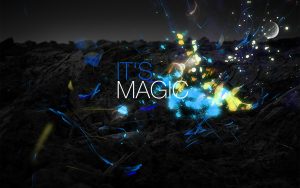
Sound & Words
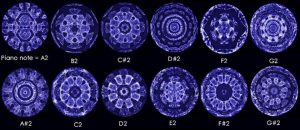
Words has Frequency and its Sound
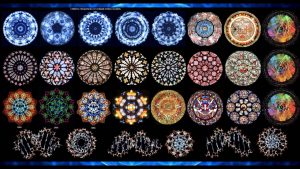
Chakra System with Sacred Frequency Patterns
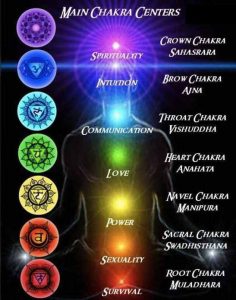
look at all those patterns
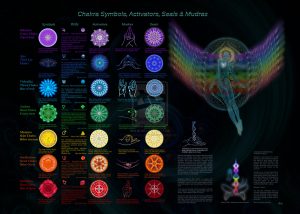
you can find these patterns everywhere..
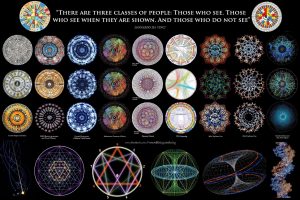
Water molecules interact also with sound and your body is made of 70 percent of water…
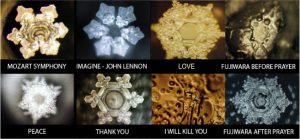
1. Septenary Numerology
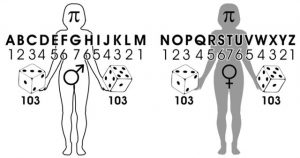
2. Chaldean Numerology
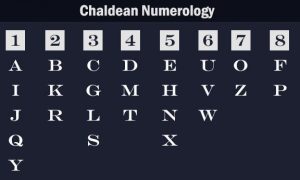
3. Pythagorean Numerology
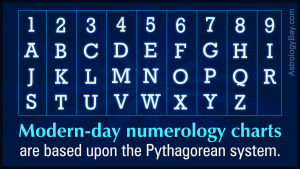
Numerology is any belief in the divine or mystical relationship between a number and one or more coinciding events.[2] It is also the study of the numerical value of the letters in words, names and ideas. It is often associated with the paranormal, alongside astrology and similar divinatory arts.[3]
Despite the long history of numerological ideas, the word “numerology” is not recorded in English before c.1907.[4]
The term numerologist can be used for those who place faith in numerical patterns and draw pseudo-scientific inferences from them, even if those people do not practice traditional numerology. For example, in his 1997 book Numerology: Or What Pythagoras Wrought, mathematician Underwood Dudley uses the term to discuss practitioners of the Elliott wave principle of stock market analysis.
Pythagoras and other philosophers of the time believed that because mathematical concepts were more “practical” (easier to regulate and classify) than physical ones, they had greater actuality. St. Augustine of Hippo (A.D. 354–430), wrote “Numbers are the Universal language offered by the deity to humans as confirmation of the truth.”[dubious ] Similar to Pythagoras, he too believed that everything had numerical relationships and it was up to the mind to seek and investigate the secrets of these relationships or have them revealed by divine grace. See Numerology and the Church Fathers for early Christian beliefs on the subject.
In 325 AD, following the First Council of Nicaea, departures from the beliefs of the state church were classified as civil violations within the Roman Empire. Numerology had not found favor with the Christian authority of the day and was assigned to the field of unapproved beliefs along with astrology and other forms of divination and “magic”.[citation needed] Despite this religious purging, the spiritual significance assigned to the heretofore “sacred” numbers had not disappeared; several numbers, such as the “Jesus number” have been commented and analyzed by Dorotheus of Gaza and numerology still is used at least in conservative Greek Orthodox circles.[5][6] However, despite the church’s resistance to numerology, there have been arguments made for the presence of numerology in the Bible and religious architecture. For example, the numbers 3 and 7 hold strong spiritual meaning in the Bible. The most obvious example would be the creation of the world in 7 days. Jesus asked God 3 times if he could avoid crucifixion and was crucified at 3 in the afternoon. 7 is the length of famine and other God-imposed events and is sometimes followed by the number 8 as a symbol of change.[7]
Some alchemical theories were closely related to numerology. For example, Persian-Arab alchemist Jabir ibn Hayyan framed his experiments in an elaborate numerology based on the names of substances in the Arabic language.[8]
Numerology is prominent in Sir Thomas Browne‘s 1658 literary Discourse The Garden of Cyrus. Throughout its pages the author attempts to demonstrate that the number five and the related Quincunx pattern can be found throughout the arts, in design, and in nature – particularly botany.
Modern numerology has various antecedents. Ruth A. Drayer’s book, Numerology, The Power in Numbers (Square One Publishers) says that around the start of the 20th century Mrs. L. Dow Balliett combined Pythagoras’ work with Biblical reference. Balliett’s student, Juno Jordan, helped numerology become the system known today as Pythagorean, although Pythagoras himself had nothing to do with the system, by publishing “The Romance in Your Name” in 1965, provided a system for identifying what he called key numerological influences in names and birth dates that remains used today. Other ‘numerologists’ including Florence Campbell (1931),[9] Lynn Buess (1978), Mark Gruner (1979), Faith Javane and Dusty Bunker (1979), Kathleen Roquemore (1985) expanded on the use of numerology for assessing personality or events. These different schools of numerology give various methods for using numerology.
Skeptics argue that numbers have no occult significance and cannot by themselves influence a person’s life. Skeptics therefore regard numerology as a superstition and a pseudoscience that uses numbers to give the subject a veneer of scientific authority.[2]
Two studies have been done investigating numerological claims, both producing negative results, one in the UK in 1993,[10] and one in 2012 in Israel. The experiment in Israel involved a professional numerologist and 200 participants. The experiment was repeated twice and still produced negative results.[11]
There are various numerology systems which assign numerical value to the letters of an alphabet. Examples include the Abjad numerals in Arabic, the Hebrew numerals, Armenian numerals, and Greek numerals. The practice within Jewish tradition of assigning mystical meaning to words based on their numerical values, and on connections between words of equal value, is known as gematria.
In one method, numbers can be assigned to letters of the Latin alphabet as follows:
…..and then summed. Examples:
A quicker way to arrive at a single-digit summation (the digital root) is simply to take the value modulo 9, substituting a 0 result with 9 itself.
The single digit then arrived at is assigned a particular significance according to the method used.
Different methods of interpretation exist, including Chaldean, Pythagorean, Hebraic, Helyn Hitchcock‘s method, Phonetic, Japanese, Arabic and Indian.
The examples above are calculated using decimal (base 10) arithmetic. Other number systems exist, such as binary, octal, hexadecimal and vigesimal; summing digits in these bases yields different results. The first example, shown above, appears thus when rendered in octal (base 8):
The Arabic system of numerology is known as Abjad notation or Abjad numerals. In this system each letter of Arabic alphabet has a numerical value. This system is the foundation of ilm-ul-cipher, the Science of Cipher, and ilm-ul-huroof, the Science of Alphabet:
ط=9 ح=8 ز=7 و=6 ه=5 د=4 ج=3 ب=2 أ=1
ص=90 ف=80 ع=70 س=60 ن=50 م=40 ل=30 ك=20 ي=10
ظ=900 ض=800 ذ=700 خ=600 ث=500 ت=400 ش=300 ر=200 ق=100
غ=1000
Some Chinese assign a different set of meanings to the numbers and certain number combinations are considered luckier than others. In general, even numbers are considered lucky, since it is believed that good luck comes in pairs.
Traditional Chinese Medicine (TCM), and its associated fields such as acupuncture, base their system on mystical numerical associations, such as the “12 vessels circulating blood and air corresponding to the 12 rivers flowing toward the Central Kingdom; and 365 parts of the body, one for each day of the year” being the basis of locating acupuncture points.[12]
Cantonese frequently associate numbers with the following connotations (based on its sound), which may differ in other varieties of Chinese:
Some “lucky number” combinations include:
In South India, mostly Tamil Nadu, the numbers assigned to English alphabets are different. The list is shown below:
There is no assignment for the number 9. Numerologists analyze double-digit numbers from 10 to 99.
Fifth generation (5G), a.k.a. New Radio (NR), uses the term “numerology” to describe the combination of subcarrier spacing and symbol length. For example, in NR(5G) several different numerology (i.e., different subcarrier spacing and symbol length) are supported whearas in LTE there is only one numerology.[13]
Scientific theories are sometimes labeled “numerology” if their primary inspiration appears to be a set of patterns rather than scientific observations. This colloquial use of the term is quite common within the scientific community and it is mostly used to dismiss a theory as questionable science.
The best known example of “numerology” in science involves the coincidental resemblance of certain large numbers that intrigued such eminent men as mathematical physicist Paul Dirac, mathematician Hermann Weyl and astronomer Arthur Stanley Eddington. These numerical coincidences refer to such quantities as the ratio of the age of the universe to the atomic unit of time, the number of electrons in the universe, and the difference in strengths between gravity and the electric force for the electron and proton. (“Is the Universe Fine Tuned for Us?”, Stenger, V.J., page 3[14]).
The discovery of atomic triads, an early attempt to sort the elements into some logical order by their physical properties, was once considered a form of numerology, and yet ultimately led to the construction of the periodic table. Here the atomic weight of the lightest element and the heaviest are summed, and averaged, and the average is found to be very close to that of the intermediate weight element. This didn’t work with every triplet in the same group, but worked often enough to allow later workers to create generalizations.
Large number co-incidences continue to fascinate many mathematical physicists. For instance, James G. Gilson has constructed a “Quantum Theory of Gravity” based loosely on Dirac’s large number hypothesis.[15]
Wolfgang Pauli was also fascinated by the appearance of certain numbers, including 137, in physics.[16]
British mathematician I. J. Good wrote:
There have been a few examples of numerology that have led to theories that transformed society: see the mention of Kirchhoff and Balmer in Good (1962, p. 316) … and one can well include Kepler on account of his third law. It would be fair enough to say that numerology was the origin of the theories of electromagnetism, quantum mechanics, gravitation…. So I intend no disparagement when I describe a formula as numerological.
When a numerological formula is proposed, then we may ask whether it is correct. … I think an appropriate definition of correctness is that the formula has a good explanation, in a Platonic sense, that is, the explanation could be based on a good theory that is not yet known but ‘exists’ in the universe of possible reasonable ideas.
The Origin of the Zodiac: (Astrology)
The zodiac (Greek: ζoδιακός, zōdiakos) is the term used to describe the circle of twelve 30° divisions of celestial longitude that are centred upon the ecliptic – the path of the sun. The term zodiac derives from Latin zōdiacus, which in its turn comes from the Greek ζoδιακoς κύκλος (zōdiakos kuklos), meaning “circle of animals”.
From the earliest of times, the zodiac has been universally used to predict or reflect characteristics of personality, whether from the Chinese, Mesopotamian, Indus Valley, Egyptian or any other culture, echoing the ancient philosophy ‘As above – so below‘… what we today call astrology.
Astrology, in its broadest sense, is the search for purpose in the heavens.
We know from ancient records that the Greeks inherited their knowledge of the heavens primarily from the Mesopotamians, who in turn inherited their knowledge from the Sumerians. But is there any evidence of the heavenly constellations in art or culture from before this time. Remarkably, it has been proposed that the images at Lascaux and other nearby Palaeolithic sites show exactly that…
The Lascaux Planetarium.
Near to the entrance of the Lascaux cave complex is a magnificent painting of a bull. Hanging over its shoulder is what appears (to us) to be a map of the Pleiades, the cluster of stars sometimes called the Seven Sisters. Inside the bull painting, there are also indications of spots that may be a representation of other stars found in that region of sky. Today, this region forms part of the constellation of Taurus the bull.
In recent years, new research has suggested that the Lascaux paintings may incorporate prehistoric star charts. Dr Michael Rappenglueck of the University of Munich argued that some of the non-figurative dot clusters and dots within some of the figurative images correlate with the constellations of Taurus, The Pleiades and the grouping known as the “Summer Triangle”. Based on her own study of the astronomical significance of Bronze Age petroglyphs in the Vallée des Merveilles and her extensive survey of other prehistoric cave painting sites in the region — most of which appear to have been specifically selected because the interiors are illuminated by the setting sun on the day of the winter solstice — French researcher Chantal Jègues-Wolkiewiez has further proposed that the gallery of figurative images in the Great Hall represents an extensive star map and that key points on major figures in the group correspond to stars in the main constellations as they appeared in the Palaeolithic leading to the remarkable suggestion of a direct transfer of information for over 17,000 years.
| The Origin of the Zodiac: |
While there are currently 88 constellations officially by the IUA recognised today (9), this page is concerned only with the origin of the 12 constellations that make up the modern zodiac.
The classical map of the sky, with the 48 Greek constellations, was derived from at least two different pre-Greek traditions. One tradition comprised the 12 signs of the zodiac, with several associated animalconstellations, all of which developed over 3,200-500 BC in Mesopotamia in a religious or ritual tradition. These were taken over by the Greeks around 500 BC. However the other Babylonian constellations, their farming-calendar tradition, were not adopted. The other tradition was not Mesopotamian; it comprised large constellations which appear to date from 2,800 BC, probably from the Mediterranean region, devised for the navigators of ships. They include huge bears and serpents which marked the celestial pole and equator at that time, and probably the four anonymous giants which we know as Hercules, Ophiuchus, Bootes, and Auriga, as well as some of the large southern ‘marine’ constellations. The origins of some other constellations, including the Perseus tableau and various animals, are unknown. (11) It is therefore currently concluded that among the Indo-European peoples, astrology dates to the third millennium BC. (4) This is supported by the following research.
‘There has been much speculation as to the origin of the constellations. Until recently it has usually been assumed that they evolved from the fancies of primitive imaginations, but research now suggests that they were designed as a pictorial scientific coordinate system. A coordinate system is a set of imaginary lines for measuring positions, like the lines of latitude and longitude for determining locations on the earth. The constellations perform a similar function, but they employ pictures, which make it easy to identify stars without need of instruments. Moreover, this evidence points to a time and place that they originated: about 2700 B.C at about 36° north latitude. There are three main lines of evidence that point to this date and location’. (10)
The Empty Part of the sky. There is a circle of about 36° radius in the southern part of the sky which does not contain any of the original 48 constellations. That implies that the originators of the constellations lived at about 36° north latitude because at that location, exactly such an area of southern sky would be invisible to them. Moreover, the centre of that circle moves very slowly through the sky because of the motion of the earth’s axis. The location of the centre of the empty part of the sky implies an origin date of about 2,900 B.C.
Slanted Constellations. Many of the constellations are tipped at an angle to the natural directions of north, east, south and west. If one asks if there was a time and place when they would have all been much aligned vertically and horizontally, the answer is, about 2,900 B.C. Note that this is an entirely different line of reasoning, but it yields a very similar date and location of origin. Moreover, several of the constellations mark astronomically important areas at the date. For example, the long snake Hydra would have coincided with the circle called the celestial equator.
Star risings and settings. The ancient Greek poet Aratus states that certain stars rise at the same time, or set at the same time, or that one rises as another sets on opposite points on the horizon. Because of the earth’s precession, such coincidences depend on both the location on the earth and on the date of observations. Using statistical methods, it has been found that Aratuswas describing the stars at a latitude of about 36° (within about 2°) at about 2,600 B.C. (within 800 years).
Evidence points to an origin on Latitude 36°, which is near perfect for Sumeria (the civilization from which Babylon inherited much of its science). Accordingly, the Sumerians are currently credited with originating the constellations. It is important to recognise that the Sumerians also divided both time and space with the Hexadecimal system resulting in a 360° division of the globe and heavens.
Of particular interest in relation to this is is the location of the capital city of the Assyrian empire (Nimrud), which was founded by King Shalmaneser I (1274 BC – 1245 BC). It became the Assyrian religious capital in 875 BC by Ashurnasirpal II. It also happens to be be placed 6° to the North and 12° to the East of the Egyptian anchor point of Giza/Heliopolis (12) revealing the complex system of geodetic placement in operation at that time (based on a 360° division of the globe). Perhaps also no coincidence that the longitude of Nimrud is also the same as the exterior angle of both Snoferu’s pyramids.
Nimrud – (36° 06’ N, 43° 20’ E).
The Babylonian MUL.APIN. (‘The Shining Herd’)
Having established that astrology (the 12 constellations) originated in Sumeria, it is worth investigating if this represents the true origins of the zodiac. It is known that Babylonian astrology developed within the context of divination. A collection of 32 tablets with inscribed liver models, dating from about 1,875 BC, are the oldest known detailed texts of Babylonian divination, and these demonstrate the same interpretational format as that employed in celestial omen analysis. (6)However, we are also told that another influence can be seen in Sumeria from before that time, an influence that is suggestive of geometry, longitude and latitude. (11)
The Sumerians called the twelve major zodiacal constellations the ‘Shiny herd’.
The first official inscribed version of a Babylonian compendium is from 86 BC, but by using modern astronomical techniques an astronomer at Louisiana State University has dated the original observations to 1,370 BC, give or take 100 years. He also says the observations were made within 100km of 35.1° N. The tablets record the day of the year that certain groups of stars, or constellations, appear in the sky at dawn. These constellations are widely thought to be the precursors of the modern Signs of the Zodiac. (1), However, Babylonian art is resplendent with images of Lions, Scorpions, Rams, and Bulls, dating back much further suggestive of a much earlier recognition of the zodiac symbols.
The Armenian Zodiac:
While it is traditionally claimed that the earliest reference to the zodiac originates with the Babylonians, the discovery of an observatory in Metsamor, Armenia, predating the Babylonian kingdom by almost 2,000 years has changed our perception of events as the observatory at Metsamor apparently contains the first recorded example of dividing the year into 12 sections. Using an early form of geometry, the inhabitants of Metsamor were able to create both a calendar and envision the curve of the earth. (13)
The discovery of the astronomical ‘observatory’ at Metsamor and the presence of engravings which have been speculatively called ‘zodiac creatures’ has given credence to the assertion that the ancient figures of the constellations were probably created by ancient peoples living in the Euphrates valley and near Mount Ararat in eastern Anatolia and Armenia: Rick Ney, the author of ‘Karahundj, The Armenian Stonehenge’, says of it:
“Parsamian’s discovery at Metsamor, and the stones at Sissian give concrete credence to Maunder’s and Olkott’s theories, especially when coupled with ca. 4,000–3,000 BC stone carvings of zodiac figures on rocks on the Geghama Mountain Range in Armenia.” (15).
(More about Metsamor, Armenia)
| Other Early Astrologers |
| Biblical References:
There have been suggestions that the Bible contains hidden allegories to describe astronomical events. Indeed a calculation of Biblical chronologies led the Bishop Usher to announce a date of 4004 BC as the creation date. A date not too far from the its start date was calculated at 4,004 BC (by James Usher), a date only 200 years short of the start date of the age of Taurus on the precessional clock and the same time several ‘Bull cults’ appeared in the historical record. E. W. Bullinger interpreted the creatures appearing in the books of Ezekiel and revelation as the middle signs of the four quarters of the Zodiac, with the Lion as Leo, the Bull is Taurus, the Man representing Aquarius and the Eagle representing Scorpio. ‘As for the likeness of their faces, each had the face of a man in front; the four had the face of a lion on the right side, the four had the face of an ox on the left side, and the four had the face of an eagle at the back’. (Ezek. 1:10) Some authors have linked the twelve tribes of Israel with the twelve signs of the zodiac. It is arguable that the large emphasis placed on Moses and the Israelites ‘escape’ from captivity is because it was at this very time (as it was later at the time of Christ), that the astrologers of the time were aware of a change in the precessionary clock (From the age of Taurus to the age of Aries) an event which would have been proclaimed with prophesies and predictions. When Moses was said to have descended from mount Sinai with the ten commandments, some of his people or followers were found by him to be worshipping a golden bull calf. He instructed these false idol-worshippers to be killed. This is said to represent Moses “killing” the bull and ending the Age of Taurus, thus ushering in the Age of Aries. The new Testament concerns itself with the next zodiac sign, Pisces, through the coming of Christ. It is no coincidence that one of the enduring signs for Christianity is the fish.
|
The Hindu Zodiac:
The names of the Hindu zodiac and corresponding Greek signs sound very different, being in Sanskrit and Greek respectively, but it has been long recognised that their symbols are identical. For example, dhanumeans “bow” and corresponds to Sagittarius, the “archer”, and kumbhameans “water-pitcher” and corresponds to Aquarius, the “water-carrier”. The correspondence of signs is taken to suggest the possibility of early interchange of cultural influences, but while it is generally assumed that the similarity between the symbols in both systems is because of a Greek presence c. 50 BC, but it is contended this is supposition, and that there is clear evidence of trading between the Sumerian and Babylonian cultures and the Indus Valley Culture millennia before the Greeks were ever in Asia, and the Sumerians have a record of Astrological symbols that dated back to c. 2,000 BC. B. G.
Sidhartha (14) points out that there are several references to the zodiac in the Rg Veda and Mahabharata, both of which are ancient texts which predate any Greek influence in Asia. He said of it:
‘A Rg Vedic hymn refers to the twelve fixed parts of the wheel and also to the twelve forms in connection with the sun. The hymn next describes the twelve lunar months specifically mentioning the thirteenth additional month required in this scheme. A Rg Vedic hymn to the Asvins, quoted in the Mahabharata, also refers to the twelve zodiac signs. Undoubtedly, the twelve zodiacal signs were known. Other hymns support this conclusion. This is probably the origin of the later conception of the twelve Adityas or Sun Gods’.
(More about Prehistoric India)
The Chinese Zodiac:
The Chinese animal zodiac, or sheng xiao in pinyin (literally translated as “born resembling”), is (rather interestingly) a rotating cycle of 12 years, with each year being represented by an animal and its reputed attributes. Scientifically speaking, the “Chinese Zodiac” could be said of as a way of dividing the “Jupiter Year” because it takes 12 years for Jupiter to complete one orbit the sun. The Chinese calendar counts years in cycles of sixty years. Each year has a label consisting of two parts. The first component is the celestial stem being one of the five elements. The second component is the terrestrial branch being one of the twelve animal (zodiac) signs. The equation becomes five multiplied by twelve equalling sixty, or one cycle in the Chinese calendar. (3)
The legend of the origin of the Chinese zodiac says that Buddha (other versions say the Jade Emperor of Heaven) once invited all the animals to a race; the first twelve would be included in the Zodiac calendar. It’s known from pottery artefacts that the animals of the zodiac were popular in the Tang Dynasty (618-907 AD), but they were also seen much earlier from artefacts from the Warring States Period (475-221 BC). It’s been written that the animals of the zodiac were brought to China via the Silk Road, the same central Asian trade route that brought the Buddhist belief from India to China. But some scholars argue that the belief predates Buddhism and has origins in early Chinese astronomy that used the planet Jupiter as a constant, as its orbit around the earth took place every 12 years. Still others have argued that the use of animals in astrology began with nomadic tribes in ancient China who developed a calendar based on the animals they used to hunt and gather.
The late date of origin suggests that the Chinese inherited the Indo-European concept of the zodiac and adopted it into their own belief system.
(More about Prehistoric China)
| Modern Astrology: |
Astrology is still considered a pseudo-science in the west, but not in other parts of the world, such as India for example, where In 2001, Indian scientists and politicians debated a proposal to use state money to fund research into astrology, resulting in permission for Indian universities to offer courses in Vedic astrology. In February 2011, the Bombay High Court reaffirmed astrology’s standing in India when it dismissed a case which had challenged its status as a science. (7)
Jung and Astrology:
Jung managed to bring astrology into the forum of science through his research into the symbolic meaning of his patient’s dreams, conversations and paintings. Jung observed recurring mythical themes or archetypes. He proposed that these universal and timeless archetypes channel experiences and emotions, resulting in recognizable and typical patterns of behaviour with certain probable outcomes. Jung claimed to observe a correlation between these archetypal images and the astrological themes or traditional ‘gods’ associated with the planets and signs of the zodiac. He concluded that the symbolic heavenly figures described by the constellations were originally inspired by projections of images created by the collective unconscious.
Jung’s psychological astrology still links the psyche to the cosmos, but it is not deterministic. Nor is an individual’s everyday life ruled by the positions of the planets.
He wrote “Astrology represents the sum of all the psychological knowledge of antiquity”. (8) But he also recognised a subtle difference with traditional astrology in that he believed that astrological claims of correlations between the position of heavenly bodies at the time of birth and an individual’s development were acausal and not actually directly caused by the planets. Something which led him to develop his concept of Psychological Astrology, which Jung compared to Aristotle’s formal causation, which posed that “whatever is born or done at this particular moment of time, has the quality of this moment of time”.
In 1949 Bertram Forer conducted a personality test on students. While seemingly giving the students individualized results, he instead gave each student exactly the same sheet that discussed their personality. The personality descriptions were taken from a book on Astrology. When the students were asked to comment on the accuracy of the test with a rating more than 40% gave it the top mark of 5 out of 5, and the average rating was 4.2. The results of this study have been replicated in numerous other studies.
https://www.youtube.com/watch?v=MQ5I3Q8axgE&list=PL8rGkPnahuZ_fyEXkvmvkoNtuGg90fdu7